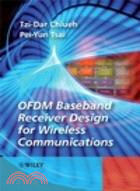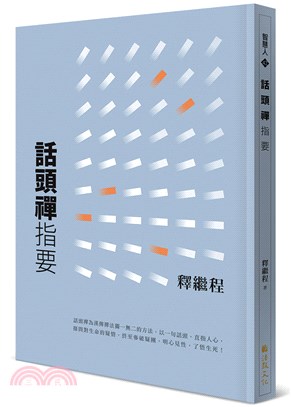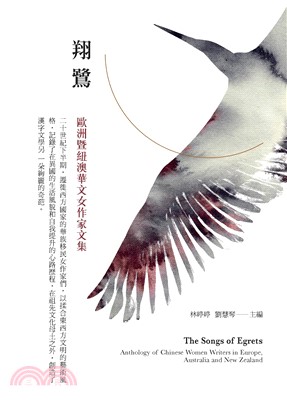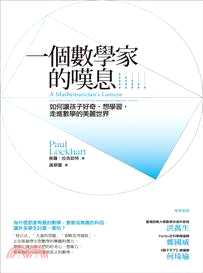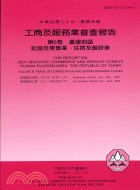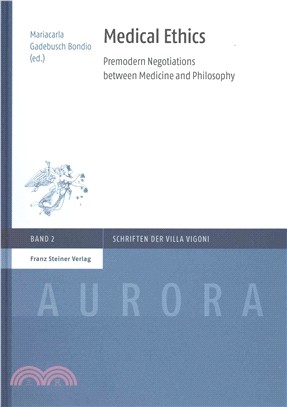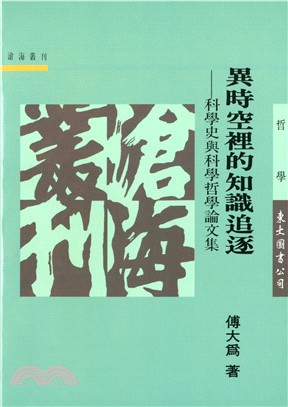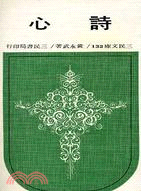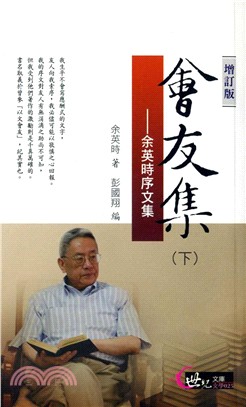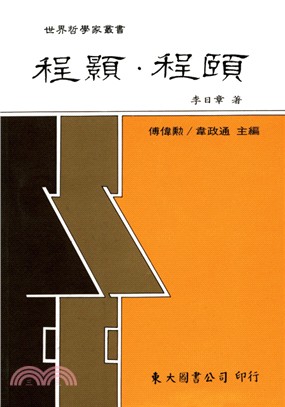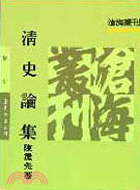OFDM BASEBAND RECEIVER DESIGN FOR WIRELESS COMMUNICATIONS
商品資訊
ISBN13:9780470822340
出版社:全華經銷
作者:TZI-DAR CHIUEH (NTU); PEI-YUN TSAI
出版日:2007/01/01
裝訂:精裝
規格:25cm*17cm (高/寬)
定價
:NT$ 1300 元優惠價
:95 折 1235 元
無庫存,下單後進貨(採購期約4~10個工作天)
下單可得紅利積點:37 點
商品簡介
作者簡介
目次
相關商品
商品簡介
Orthogonal frequency-division multiplexing (OFDM) access schemes are becoming more prevalent among cellular and wireless broadband systems, accelerating the need for smaller, more energy efficient receiver solutions. Up to now the majority of OFDM texts have dealt with signal processing aspects. To address the current gap in OFDM integrated circuit (IC) instruction, Chiueh and Tsai have produced this timely text on baseband design.
OFDM Baseband Receiver Design for Wireless Communications covers the gamut of OFDM technology, from theories and algorithms to architectures and circuits. Chiueh and Tsai give a concise yet comprehensive look at digital communications fundamentals before explaining modulation and signal processing algorithms in OFDM receivers. Moreover, the authors give detailed treatment of hardware issues -- from design methodology to physical IC implementation.
Closes the gap between OFDM theory and implementation
Enables the reader to
transfer communication receiver concepts into hardware
design wireless receivers with acceptable implementation loss
achieve low-power designs
Contains numerous figures to illustrate techniques
Features concrete design examples of MC-CDMA systems and cognitive radio applications
Presents theoretical discussions that focus on concepts rather than mathematical derivation
Provides a much-needed single source of material from numerous papers
Based on course materials for a class in digital communication IC design, this book is ideal for advanced undergraduate or post-graduate students from either VLSI design or signal processing backgrounds. New and experienced engineers in industry working on algorithms or hardware for wireless communications devices will also find this book to be a key reference.
OFDM Baseband Receiver Design for Wireless Communications covers the gamut of OFDM technology, from theories and algorithms to architectures and circuits. Chiueh and Tsai give a concise yet comprehensive look at digital communications fundamentals before explaining modulation and signal processing algorithms in OFDM receivers. Moreover, the authors give detailed treatment of hardware issues -- from design methodology to physical IC implementation.
Closes the gap between OFDM theory and implementation
Enables the reader to
transfer communication receiver concepts into hardware
design wireless receivers with acceptable implementation loss
achieve low-power designs
Contains numerous figures to illustrate techniques
Features concrete design examples of MC-CDMA systems and cognitive radio applications
Presents theoretical discussions that focus on concepts rather than mathematical derivation
Provides a much-needed single source of material from numerous papers
Based on course materials for a class in digital communication IC design, this book is ideal for advanced undergraduate or post-graduate students from either VLSI design or signal processing backgrounds. New and experienced engineers in industry working on algorithms or hardware for wireless communications devices will also find this book to be a key reference.
作者簡介
The authors and their groups at the National Taiwan University, Taipei, Taiwan, and the National central University, Taoyuan, Taiwan, have been doing researching wireless communication baseband IC design for more than a decade, focusing especially on OFDM (Orthogonal frequency-division multiplexing) systems recently. The research results have been published in important international journals and conferences, and are recognized by domestic and international awards.
Tzi-Dar Chiueh received his Ph.D. in electrical engineering from the California Institute of Technology in 1989 and he is now a Professor of Electrical Engineering at the National Taiwan University (NTU). Since August 2004, he has also served as the Director of the Graduate Institute of Electronics Engineering at the same university. He has held visiting positions at ETH Zurich Switzerland and at the State University of New York at Stony Brook, Professor Chiueh has received the Acer longtern Award 11 times and the MXIC Golden Silicon Award in 2002 and 2005. His teaching efforts were recognized four times by the Teaching Excellence Award from the NTU. Professor Chiueh was the recipient of the Distinguished Research Achievements Award from the National Science Council, Taiwan, in 2004, and was awarded the Himax Chair Professor ship at the NTU in 2006. He is the author of more than 140 technical papers, many of which are on algorithm, architecture and integrated circuits for baseband communication systems.
Pei-Yun Tsai received her Ph.D. in electrical engineering from the National Taiwan University in 2005 and she is now an Assistant Professor of Electrical Engineering at the National central University, Taoyuan, Taiwan. Professor of Electrical Engineering at the National Central University, Taoyuan, Taiwan. Professor Tsai has received the Acer Longtern Award, MXIC Golden Silicon Award and 1s Asian Solid-State Circuit Conference Student Design Contest Outstanding Award in 2005. Her research interests include signal-processing algorithms and architectures for baseband communication systems.
Tzi-Dar Chiueh received his Ph.D. in electrical engineering from the California Institute of Technology in 1989 and he is now a Professor of Electrical Engineering at the National Taiwan University (NTU). Since August 2004, he has also served as the Director of the Graduate Institute of Electronics Engineering at the same university. He has held visiting positions at ETH Zurich Switzerland and at the State University of New York at Stony Brook, Professor Chiueh has received the Acer longtern Award 11 times and the MXIC Golden Silicon Award in 2002 and 2005. His teaching efforts were recognized four times by the Teaching Excellence Award from the NTU. Professor Chiueh was the recipient of the Distinguished Research Achievements Award from the National Science Council, Taiwan, in 2004, and was awarded the Himax Chair Professor ship at the NTU in 2006. He is the author of more than 140 technical papers, many of which are on algorithm, architecture and integrated circuits for baseband communication systems.
Pei-Yun Tsai received her Ph.D. in electrical engineering from the National Taiwan University in 2005 and she is now an Assistant Professor of Electrical Engineering at the National central University, Taoyuan, Taiwan. Professor of Electrical Engineering at the National Central University, Taoyuan, Taiwan. Professor Tsai has received the Acer Longtern Award, MXIC Golden Silicon Award and 1s Asian Solid-State Circuit Conference Student Design Contest Outstanding Award in 2005. Her research interests include signal-processing algorithms and architectures for baseband communication systems.
目次
Preface.
About the Authors.
Acknowledgements.
1. Introduction.
1.1 Wireless Communication Systems.
1.1.1 Digital Broadcasting Systems.
1.1.2 Mobile Cellular Systems.
1.1.3 Wireless Network Systems.
Bibliography.
2. Digital Modulation.
2.1 Single-Carrier Modulation.
2.1.1 Power Spectral Densities of Modulation Signals.
2.1.2 PSK, QAM and ASK.
2.1.3 CPFSK and MSK.
2.1.4 Pulse Shaping and Windowing.
2.2 Multi-Carrier Modulation.
2.2.1 Orthogonal Frequency-Division Multiplexing.
2.2.2 OFDM-Related Issues.
2.2.3 OFDM Transceiver Architecture.
2.2.4 OFDM System Examples.
Bibliography.
3. Multiple Access and Error-Correcting Codes.
3.1 Multiple Access.
3.1.1 Frequency-Division Multiple Access (FDMA).
3.1.2 Time-Division Multiple Access (TDMA).
3.1.3 Code-Division Multiple Access (CDMA).
3.1.4 Carrier Sense Multiple Access (CSMA).
3.2 Spread Spectrum and CDMA.
3.2.1 PN Codes.
3.2.2 Direct-Sequence Spread Spectrum.
3.2.3 Frequency-Hopping Spread Spectrum.
3.3 Error-Correcting Codes.
3.3.1 Block Codes.
3.3.2 Reed-Solomon Codes.
3.3.3 Convolutional Codes.
3.3.4 Low-Density Parity-Check Codes.
Bibliography.
4. Signal Propagation and Channel Model.
4.1 Introduction.
4.2 Wireless Channel Propagation.
4.2.1 Path Loss and Shadowing.
4.2.2 Multipath Fading.
4.2.3 Multipath Channel Parameters.
4.3 Front-End Electronics Effects.
4.3.1 Carrier Frequency Offset.
4.3.2 Sampling Clock Offset.
4.3.3 Phase Noise.
4.3.4 IQ Imbalance and DC Offset.
4.3.5 Power Amplifier Nonlinearity.
4.4 Channel Model.
4.4.1 Model for Front-End Impairments.
4.4.2 Multipath Rayleigh Fader Model.
4.4.3 Channel Models Used in Standards.
Bibliography.
5. Synchronization.
5.1 Introduction.
5.2 Synchronization Issues.
5.2.1 Synchronization Errors.
5.2.2 Effects of Synchronization Errors.
5.2.3 Consideration for Estimation and Compensation.
5.3 Detection/Estimation of Synchronization Errors.
5.3.1 Symbol Timing Detection.
5.3.2 Carrier Frequency Offset Estimation.
5.3.3 Residual CFO and SCO Estimation.
5.3.4 Carrier Phase Estimation.
5.4 Recovery of Synchronization Errors.
5.4.1 Carrier Frequency Offset Compensation.
5.4.2 Sampling Clock Offset Compensation.
Bibliography.
6. Channel Estimation and Equalization.
6.1 Introduction.
6.2 Pilot Pattern.
6.3 Pilot-Based Channel Estimation.
6.3.1 Channel Estimation by Block-Type Pilot Symbols.
6.3.2 Channel Estimation by Comb-Type Pilot Symbols.
6.3.3 Channel Estimation by Grid-Type Pilot Symbols.
6.4 Adaptive Channel Estimation.
6.5 Equalization.
6.5.1 One-Tap Equalizer.
6.5.2 Multiple-Tap Equalizer.
Bibliography.
7. MIMO Techniques.
7.1 Introduction.
7.2 MIMO Basics.
7.2.1 Capacity.
7.2.2 Diversity.
7.3 MIMO–OFDM.
7.3.1 MIMO Pilot Pattern.
7.3.2 MIMO–OFDM Synchronization.
7.3.3 MIMO–OFDM Channel Estimation.
7.4 MIMO Encoding and Detection.
7.4.1 Space Block Codes.
7.4.2 Spatial Multiplexing.
7.4.3 Spatial De-correlation.
Bibliography.
8. From Algorithm to Bit-True Design.
8.1 Design Flow Overview.
8.2 Effect of Additive Impairment Sources.
8.3 Analog-to-Digital Conversion.
8.3.1 ADC Distortions.
8.3.2 Signal Probability Distributions.
8.3.3 Dynamic Range and Precision Setting.
8.4 Finite Precision Effect in Digital Baseband Processing.
8.4.1 Fixed-Point Data Format.
8.4.2 Fixed-Point Error Model.
8.4.3 Finite Precision Effect in FIR Filters.
8.4.4 Finite Precision Effect in IIR Filters.
8.5 Conversion from Floating-Point Design to Bit-True Design.
8.5.1 Metrics for Performance Evaluation.
8.5.2 Interpolative Design Flow.
8.5.3 Simulation-Based Approaches.
8.5.4 Analytical Approaches.
Bibliography.
9. Circuit Techniques.
9.1 Introduction.
9.2 FFT.
9.2.1 FFT Algorithms.
9.2.2 Architecture.
9.2.3 Comparison.
9.3 Delay Buffer.
9.3.1 SRAM/Register File-Based Delay Buffer.
9.3.2 Pointer-Based Delay Buffer.
9.3.3 Gated Clock Strategy.
9.3.4 Comparison.
9.4 Circuits for Rectangular-to-Polar Conversion.
9.4.1 Arctangent Function.
9.4.2 Magnitude Function.
9.4.3 Comparison.
9.5 Circuits for Polar-to-Rectangular Conversion.
9.5.1 Trigonometric Approximation.
9.5.2 Polynomial Approximation.
9.5.3 Comparison.
Bibliography.
10. System Examples.
10.1 MC-CDMA Downlink Receiver IC.
10.1.1 System Description.
10.1.2 Transmitter and Receiver Design.
10.1.3 Circuit Design.
10.1.4 Experimental Results.
10.2 MIMO–OFDM Cognitive Radio Receiver IC.
10.2.1 System Overview.
10.2.2 Architecture and Circuit Design.
10.2.3 Experimental Results.
Bibliography.
Index.
About the Authors.
Acknowledgements.
1. Introduction.
1.1 Wireless Communication Systems.
1.1.1 Digital Broadcasting Systems.
1.1.2 Mobile Cellular Systems.
1.1.3 Wireless Network Systems.
Bibliography.
2. Digital Modulation.
2.1 Single-Carrier Modulation.
2.1.1 Power Spectral Densities of Modulation Signals.
2.1.2 PSK, QAM and ASK.
2.1.3 CPFSK and MSK.
2.1.4 Pulse Shaping and Windowing.
2.2 Multi-Carrier Modulation.
2.2.1 Orthogonal Frequency-Division Multiplexing.
2.2.2 OFDM-Related Issues.
2.2.3 OFDM Transceiver Architecture.
2.2.4 OFDM System Examples.
Bibliography.
3. Multiple Access and Error-Correcting Codes.
3.1 Multiple Access.
3.1.1 Frequency-Division Multiple Access (FDMA).
3.1.2 Time-Division Multiple Access (TDMA).
3.1.3 Code-Division Multiple Access (CDMA).
3.1.4 Carrier Sense Multiple Access (CSMA).
3.2 Spread Spectrum and CDMA.
3.2.1 PN Codes.
3.2.2 Direct-Sequence Spread Spectrum.
3.2.3 Frequency-Hopping Spread Spectrum.
3.3 Error-Correcting Codes.
3.3.1 Block Codes.
3.3.2 Reed-Solomon Codes.
3.3.3 Convolutional Codes.
3.3.4 Low-Density Parity-Check Codes.
Bibliography.
4. Signal Propagation and Channel Model.
4.1 Introduction.
4.2 Wireless Channel Propagation.
4.2.1 Path Loss and Shadowing.
4.2.2 Multipath Fading.
4.2.3 Multipath Channel Parameters.
4.3 Front-End Electronics Effects.
4.3.1 Carrier Frequency Offset.
4.3.2 Sampling Clock Offset.
4.3.3 Phase Noise.
4.3.4 IQ Imbalance and DC Offset.
4.3.5 Power Amplifier Nonlinearity.
4.4 Channel Model.
4.4.1 Model for Front-End Impairments.
4.4.2 Multipath Rayleigh Fader Model.
4.4.3 Channel Models Used in Standards.
Bibliography.
5. Synchronization.
5.1 Introduction.
5.2 Synchronization Issues.
5.2.1 Synchronization Errors.
5.2.2 Effects of Synchronization Errors.
5.2.3 Consideration for Estimation and Compensation.
5.3 Detection/Estimation of Synchronization Errors.
5.3.1 Symbol Timing Detection.
5.3.2 Carrier Frequency Offset Estimation.
5.3.3 Residual CFO and SCO Estimation.
5.3.4 Carrier Phase Estimation.
5.4 Recovery of Synchronization Errors.
5.4.1 Carrier Frequency Offset Compensation.
5.4.2 Sampling Clock Offset Compensation.
Bibliography.
6. Channel Estimation and Equalization.
6.1 Introduction.
6.2 Pilot Pattern.
6.3 Pilot-Based Channel Estimation.
6.3.1 Channel Estimation by Block-Type Pilot Symbols.
6.3.2 Channel Estimation by Comb-Type Pilot Symbols.
6.3.3 Channel Estimation by Grid-Type Pilot Symbols.
6.4 Adaptive Channel Estimation.
6.5 Equalization.
6.5.1 One-Tap Equalizer.
6.5.2 Multiple-Tap Equalizer.
Bibliography.
7. MIMO Techniques.
7.1 Introduction.
7.2 MIMO Basics.
7.2.1 Capacity.
7.2.2 Diversity.
7.3 MIMO–OFDM.
7.3.1 MIMO Pilot Pattern.
7.3.2 MIMO–OFDM Synchronization.
7.3.3 MIMO–OFDM Channel Estimation.
7.4 MIMO Encoding and Detection.
7.4.1 Space Block Codes.
7.4.2 Spatial Multiplexing.
7.4.3 Spatial De-correlation.
Bibliography.
8. From Algorithm to Bit-True Design.
8.1 Design Flow Overview.
8.2 Effect of Additive Impairment Sources.
8.3 Analog-to-Digital Conversion.
8.3.1 ADC Distortions.
8.3.2 Signal Probability Distributions.
8.3.3 Dynamic Range and Precision Setting.
8.4 Finite Precision Effect in Digital Baseband Processing.
8.4.1 Fixed-Point Data Format.
8.4.2 Fixed-Point Error Model.
8.4.3 Finite Precision Effect in FIR Filters.
8.4.4 Finite Precision Effect in IIR Filters.
8.5 Conversion from Floating-Point Design to Bit-True Design.
8.5.1 Metrics for Performance Evaluation.
8.5.2 Interpolative Design Flow.
8.5.3 Simulation-Based Approaches.
8.5.4 Analytical Approaches.
Bibliography.
9. Circuit Techniques.
9.1 Introduction.
9.2 FFT.
9.2.1 FFT Algorithms.
9.2.2 Architecture.
9.2.3 Comparison.
9.3 Delay Buffer.
9.3.1 SRAM/Register File-Based Delay Buffer.
9.3.2 Pointer-Based Delay Buffer.
9.3.3 Gated Clock Strategy.
9.3.4 Comparison.
9.4 Circuits for Rectangular-to-Polar Conversion.
9.4.1 Arctangent Function.
9.4.2 Magnitude Function.
9.4.3 Comparison.
9.5 Circuits for Polar-to-Rectangular Conversion.
9.5.1 Trigonometric Approximation.
9.5.2 Polynomial Approximation.
9.5.3 Comparison.
Bibliography.
10. System Examples.
10.1 MC-CDMA Downlink Receiver IC.
10.1.1 System Description.
10.1.2 Transmitter and Receiver Design.
10.1.3 Circuit Design.
10.1.4 Experimental Results.
10.2 MIMO–OFDM Cognitive Radio Receiver IC.
10.2.1 System Overview.
10.2.2 Architecture and Circuit Design.
10.2.3 Experimental Results.
Bibliography.
Index.
主題書展
更多
主題書展
更多書展今日66折
您曾經瀏覽過的商品
購物須知
為了保護您的權益,「三民網路書店」提供會員七日商品鑑賞期(收到商品為起始日)。
若要辦理退貨,請在商品鑑賞期內寄回,且商品必須是全新狀態與完整包裝(商品、附件、發票、隨貨贈品等)否則恕不接受退貨。

